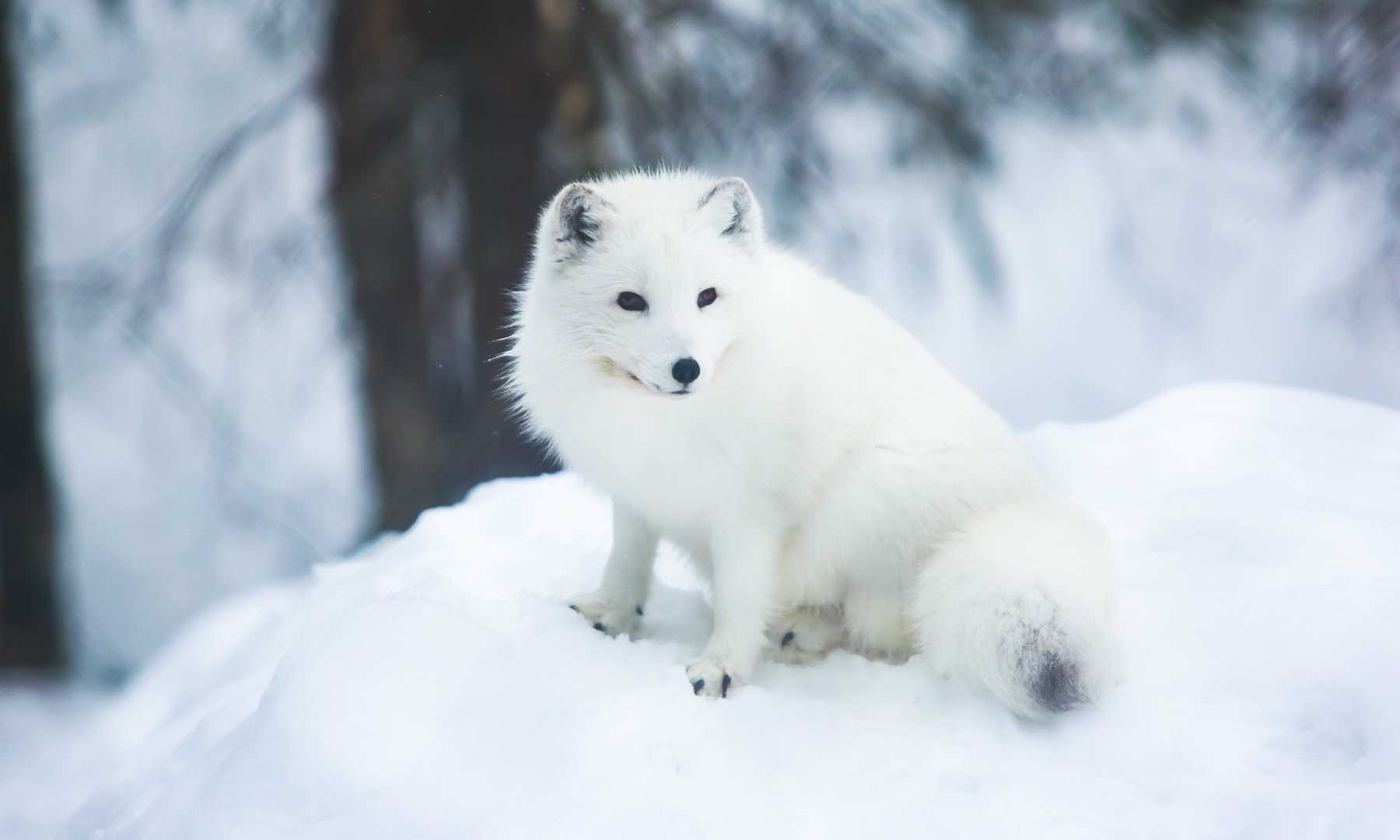Get to know this cold-weather champion
Order: Carnivora
Family: Canidae
Genus: Alopex
Species: A. Lagopus
Range: Found in the Arctic and alpine tundra in the northernmost regions of Europe, Russia, Alaska, Canada, Greenland, and Iceland
Population: More than 100,000
IUCN Red List Status: Least concern
Key Traits: Stark white coat (in winter); gray to dark brown (in summer); long bushy tails; wide, short, pointed ears; can reach 18 to 27 inches long and 7 to 12 pounds.
There are two types of Arctic Foxes, the common white fox and the blue morph fox. Blue morphs remain a dark charcoal color year-round and are rare, making up just one to three percent of the population. Watch the video to learn more about this stunning Arctic icon.
Read more
At first glance, the furry Arctic Fox with its small, pointed ears and kohl-rimmed eyes might be mistaken for a stuffed animal. However, its diminutive size and gentle appearance belies a stealth hunter adapted to survive bitter subarctic temperatures.
In fact, every part of the Arctic Fox’s appearance—from its thick fur, which is the most insulating of any Arctic animal, to its short legs and small frame which are easier to keep warm—helps it thrive in its frigid natural habitat.
Get Inspired By Photos, Videos, Webinars, Stories, And Exclusive Offers.
Sign Up
It’s not just the fox’s appearance that denotes adaptations to the climate. The Arctic Fox has an omnivore diet that ranges from berries and fish to birds, insects, and eggs, depending on conditions and availability. But the bulk of its diet is made up of lemmings, small rodents that run beneath the snowy tundra in winter. An Arctic Fox is able to listen for these rodents’ high-pitched sounds, locate the source, and then pounce headfirst into the snow to capture its prey, much like a seabird swoops into the water to catch a fish.
Although an Arctic Fox doesn’t need to hibernate, if food is especially scarce it may dig a den and slow its metabolism for about two weeks, creating a kind of mini-hibernation and keeping it safe from predators while it rests.









